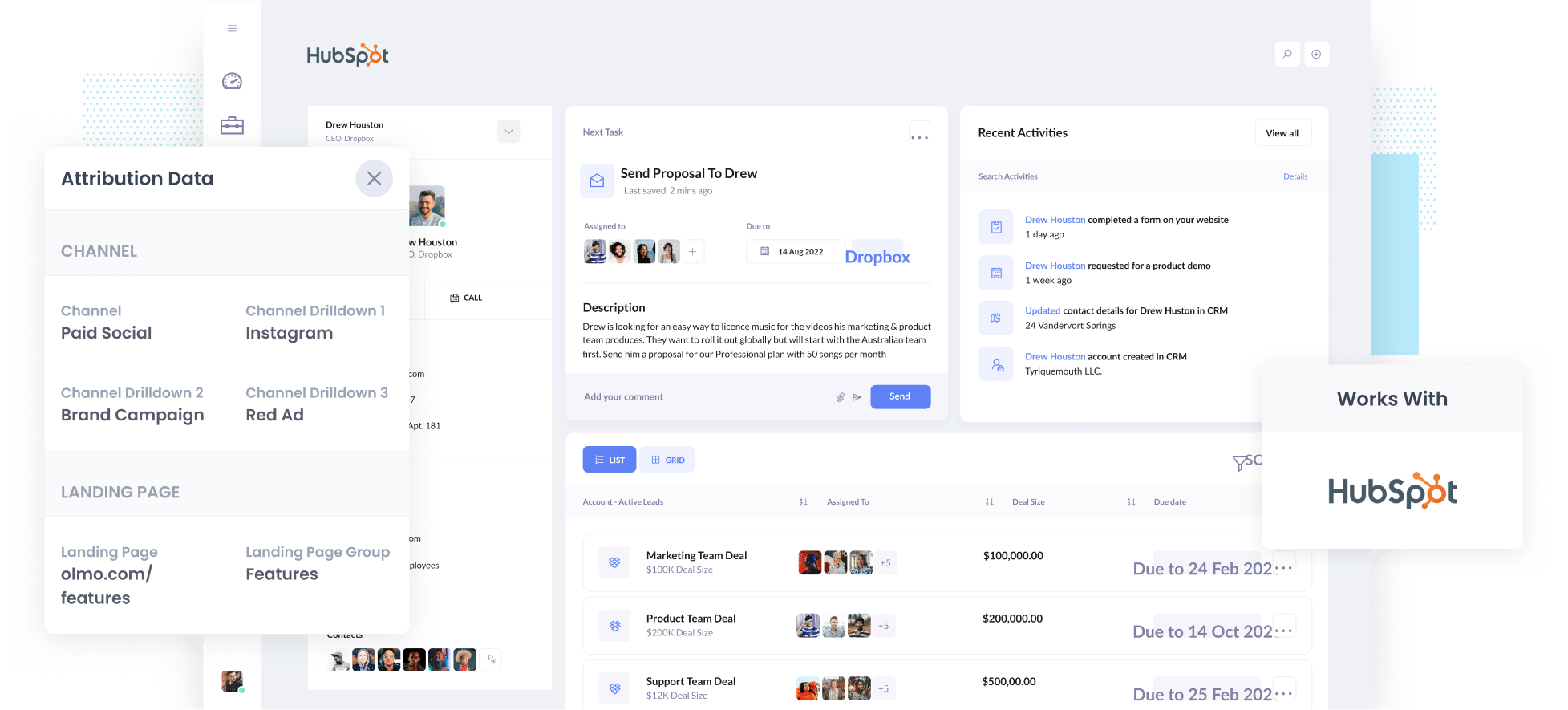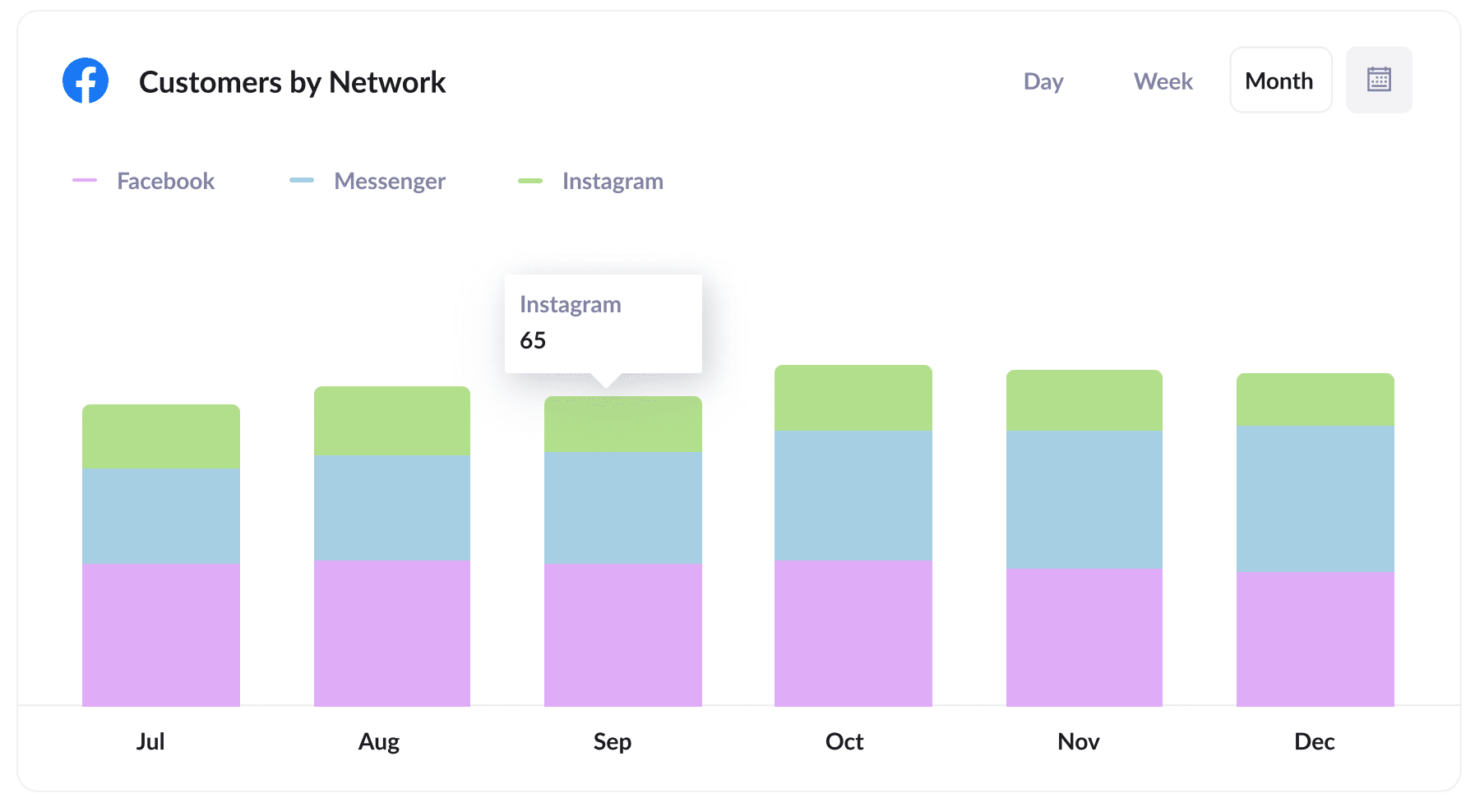Easily track Instagram Ads in Hubspot using these 4 steps
Want to know how many leads and customers you get from your Instagram Ads? In this post we'll show you how to track them from right inside of Hubspot.

Tools like Google Analytics are great at tracking the number of website visitors you receive.
But if your objective is to truly assess the Return on Investment (ROI) of your Instagram Ads, you need the capability to monitor the quantity of leads and customers they produce, rather than just website visitors.
In this article, we'll guide you through the process of using Attributer to track the number of leads and customers coming from your Instagram Ads.
4 simple steps to track Instagram Ads in Hubspot
Tracking how many leads and customers you get from Instagram Ads in Hubspot is easy when you follow these 4 steps:
1. Add UTM parameters to your Instagram Ads

First up add UTM parameters to your Instagram Ads.
If you're unfamiliar with UTM parameters, they're just pieces of text added to the end of the URL you're using to direct visitors from your campaigns to your website.
As an example, if you're sending someone to attributer.io/integrations/hubspot, your final URL (including UTM parameters) would look something like this:
attributer.io/integrations/hubspot?utm_medium=paidsocial&utm_source=instagram&utm_campaign=brand-campaign
While you can structure the UTM parameters however you like, generally best practice for Instagram Ads is as below:
- UTM Medium = Paid social
- UTM Source = Instagram
- UTM Campaign = The name of your campaign
- UTM Term = The name of the ad set the ad belongs to
- UTM Content = The specific ad
Adding UTM parameters to your URLs is quick and simple. There are also free tools on the internet which can help you build them.
2. Install Attributer and add some hidden fields

Next up you need to add Attributer to your website.
When you sign up for a 14-day free trial, we'll send you a piece of code to install on your website (instructions on how to add it can be found here).
After you've added the code, you'll need to include a series of hidden fields to your forms, including:
- Channel
- Channel Drilldown 1
- Channel Drilldown 2
- Channel Drilldown 3
- Channel Drilldown 4
Attributer works with dozens of form builders (including Hubspot forms, Gravity Forms, Webflow Forms, Typeform and many more). It's usually very simple to add these hidden fields and step-by-step instructions for many form builders can be found here.
3. Attributer writes Instagram Ads data into hidden fields

After you have Attributer set up it will start tracking where your website traffic is coming from and will classify each visitor into various channels, such as Paid Social, Paid Search, Organic Search, and more, storing this data within a cookie in the visitor's web browser.
When that visitor fills out a form on your website, Attributer will automatically populate the hidden fields with information about their source.
4. Instagram Ads data is sent to Hubspot

The last step happens when a visitor completes a form on your website. The lead source information, along with the lead's name, email, and other details, is included by Attributer in your form tool. All of this data can then be seamlessly sent to Hubspot where you can use it to:
- Create reports: Generate reports that provide insights into the number of leads that come from your Instagram Ads, conversion rates to customers, total revenue generated, and more.
- Personalize sales outreach: Leverage the data to personalize communication with new leads. For example, if the lead source can be tracked back to an Instagram ad promoting a specific product or service, you can directly address that in your subsequent communications.
What data gets captured in Hubspot?
With each form submission, Attributer will send the below information:
1. Marketing channel data
Attributer sends data about where the lead came from.
Consider this example: You work as a marketer for a real estate company, and your current marketing campaign revolves around Instagram ads to promote your latest listing.
When someone clicks on one of your ads and then fills out a form on your website, the following information would be captured (depending on the UTM parameters you've attached to your ads):
- Channel: Paid Social
- Channel Drilldown 1: Instagram
- Channel Drilldown 2: House listing
- Campaign (or the specific campaign name)
- Channel Drilldown 3: House Ad (or whatever ad creative they clicked on)
2. Landing page data
Additionally, Attributer sends information about the first landing page (e.g., realestate.com/blog/house-types) and its corresponding landing page category (e.g., /blog).
This functionality allows you to track the number of leads coming from different content categories on your website, such as your blog. This allows for deeper, more detailed analysis so you can hone in on the specific blog posts that are driving the highest number of leads.
What is Attributer and why use it?
Attributer is a small code snippet that seamlessly integrates with your company's website.
When a visitor lands on your site, Attributer evaluates where they came from and categorizes them into marketing channels (e.g., Paid Social, Paid Search, Organic Search, etc.), saving this information within a browser cookie.
Once that visitor submits a form on your website, Attributer sends the attribution data from the hidden fields within your forms. Subsequently, this data can be sent to the tools connected to your forms, including your CRM, email marketing platform, billing system, analytics tools, and more.
Several reasons make Attributer the standout choice for tracking your Instagram Ads within Hubspot:
- Captures other attribution information - In addition to capturing the source of leads coming from your Instagram Ads, Attributer also captures data on leads arriving through other channels like Organic Search, Organic Social, Referral, or Direct. This holistic approach ensures that you can trace the source of ALL your leads and customers, not those from your Instagram Ads.
- Remembers the data - Attributer stores UTM parameters within a user's browser cookie. This means that regardless of the specific page where a user decides to complete a form, the UTM parameters consistently accompany the data, providing you with precise and consistent insights into the quantity of leads and customers generated by your Instagram Ads.
- Cleans the data - Attributer was engineered to accommodate variations in UTM usage, such as instances of using utm_source=instagram in some campaigns and utm_source=instagram.com in others. It then assigns these leads to the correct channel, regardless of these discrepancies, ensuring the accuracy and reliability of your data.
3 example reports you can generate when you track your Instagram Ads in Hubspot
Before founding Attributer, I served as the leader of marketing and analytics teams at numerous technology companies for over 15 years.
Throughout my career, I've invested over $1 million to advertising efforts across platforms such as Instagram and various social networks. Furthermore, I've conducted comprehensive analyses, including the creation of hundreds of reports, to extract valuable insights into the most effective campaigns.
Here are some of the reports that have consistently provided invaluable insights over the years:
1. Leads by channel

The chart shown above presents the monthly lead count segmented by their sources. It offers a comprehensive overview of where your leads originate and where you should prioritize your growth efforts.
For instance, if this report indicates that the majority of your leads are sourced from Organic Search, despite a substantial budget allocation to Instagram Ads, it might be smart to consider strategic adjustments.
2. Customers by network

If you're actively running Instagram Ads, there's a strong possibility that you're concurrently running ad campaigns on Facebook and various other networks.
In such a scenario, this report can be an invaluable asset. It provides you with insights into the quantity of customers generated through your advertising efforts on each network, offering guidance on where to strategically distribute your budget for optimal Return on Investment (ROI).
3. Revenue by campaign

This chart shows the revenue generated by your currently active Instagram campaigns.
It helps to pinpoint campaigns that are genuinely yielding a positive Return on Investment (ROI). Consequently, it aids in making informed decisions regarding the allocation of additional budget for optimized outcomes.
Wrap up
If you've been looking for a way to monitor the quantity of leads, customers, and revenue generated by your Instagram Ads, Attributer offers a solution.
Attributer enables you to accurately trace the exact origin of each lead, right down to the specific campaign, ad set, or ad they interacted with.
The best part? Getting started is completely free, and the setup process typically takes only about 10 minutes. So start a free 14-day trial of Attributer today to see how it can help you!
Get Started For Free
Start your 14-day free trial of Attributer today!

About the Author
Aaron Beashel is the founder of Attributer and has over 15 years of experience in marketing & analytics. He is a recognized expert in the subject and has written articles for leading websites such as Hubspot, Zapier, Search Engine Journal, Buffer, Unbounce & more. Learn more about Aaron here.
